Table Of Content
Open source AI plays a crucial role in advancing the field of artificial intelligence by promoting accessibility, collaboration, and transparency. It enables a broader community to contribute to and benefit from AI advancements, driving innovation and education while providing cost-effective solutions for a wide range of applications. Despite some challenges, the benefits of open source AI make it a vital component of the AI landscape. Utilizing open-source AI models and components can enhance your opportunities and become a vital part of your generative AI strategy. The Hugging Face platform is an essential resource, offering developers and researchers easy access to various models for various tasks.
In this paper, we will explore the Hugging Face Ecosystem and illustrate a workflow for implementing tasks for building generative AI applications. By using easily accessible resources and combining existing components, you can build unique features and accomplish the requirements of your product development teams.
Many developers utilize the Hugging Face platform to build and share applications, enabling collaboration and community contribution. Users can share their models and datasets and access and leverage the work of others. This collaborative environment allows for uploading, improving, and commercializing models and datasets. You may find open source models on Hugging Face suitable for many machine-learning tasks, such as text, audio, image, or multimodal models that can be used for your application.
Krasamo is a software development company that promotes technology-agnostic AI solutions. Explore the Hugging Face Hub and Spaces and learn about available models, datasets, and building demos or prototypes for your use case.
What is Hugging Face?
Hugging Face is an open source platform, also known as a “model hub” where you can find a collection of machine learning models and datasets. The platform provides the infrastructure to develop and train your machine learning models. This includes everything from writing the initial code to deploying the finished model.
Hugging Face tools integrate seamlessly with other popular machine learning frameworks, such as TensorFlow and PyTorch, ensuring compatibility and flexibility in your development workflow. It also supports scalable deployment options, including cloud services, to meet the needs of enterprise-level applications.
The platform allows you to create presentations of your work, including demos, for others to try and see how your models perform. The open-source nature of their libraries encourages collaboration and knowledge sharing, democratizing access to cutting-edge AI technologies.
Hugging Face Components
The Hugging Face ecosystem democratizes access to advanced AI tools, fosters community collaboration, and accelerates innovation in machine learning. Through its comprehensive platform, user-friendly tools, and extensive educational resources, Hugging Face has made it easier for developers and researchers to build, share, and deploy AI models across various domains. Familiarize yourself with the key components of the Hugging Face ecosystem:
Hugging Face Hub
Hugging Face Hub is an open platform that hosts a vast collection of machine learning models, datasets, and demos. It allows users to find, filter, and share models for various tasks such as text, audio, image, and multimodal tasks. The Hub supports collaboration and knowledge sharing within the AI community by making thousands of open-source models easily accessible.
Hugging Face Spaces
Hugging Face Spaces is a platform within the Hugging Face ecosystem that enables users to create, share, and deploy AI applications with a user-friendly interface. It leverages the Gradio library to build interactive demos and prototypes that can be run locally or on the cloud. Hugging Face Spaces simplifies the process of demonstrating and testing AI models, making them accessible to a broader audience.
Hugging Face Transformers Library
The Hugging Face Transformers Library is an open-source library that provides pre-trained models and tools for natural language processing (NLP), audio processing, and computer vision tasks. It offers a high-level API for loading and utilizing state-of-the-art models like BERT, GPT, T5, and others. The library supports multiple deep learning frameworks and simplifies using and fine-tuning models for various applications.
LLM Leaderboards
LLM Leaderboards are ranking systems that evaluate the performance of large language models (LLMs) and chatbots. These leaderboards often use a variety of benchmarks and metrics to assess model performance, including human preferences and technical evaluations. They help users identify top-performing models for specific tasks and compare different models’ capabilities from open-source and proprietary sources.
Model Checkpoint
A Model Checkpoint refers to a saved state of a machine learning model that includes the pre-trained weights and all necessary configurations. Checkpoints are used to load a model at a specific state, allowing for the continuation of training, fine-tuning, or inference. They can vary in size and complexity, with some containing millions to billions of parameters.
Model Card
A Model Card is a documentation file associated with a machine learning model that provides detailed information about the model’s architecture, training process, intended use cases, limitations, and performance metrics. Model cards help users understand the capabilities and constraints of a model, facilitating informed decision-making when selecting and deploying models for specific tasks.
Pipeline Function
The key advantage of the Hugging Face pipeline API is that it allows developers to get started with powerful AI models quickly and easily, using only a few lines of code. This makes it accessible for prototyping and experimentation. However, developers can still customize and extend the functionality to meet specific needs or integrate with larger systems. The pre-built functionality provided by the Hugging Face library is comprehensive enough to handle most common use cases and flexible enough for more advanced customization when required.
Benefits of the Hugging Face Platform
Hugging Face is of great utility in AI development, as well as the broad range of tasks it supports. Here are the main reasons developers are drawn to Hugging Face:
- Diverse AI Model Ecosystem: Hugging Face provides a rich repository of open-source models across various domains, such as natural language processing (NLP), computer vision, and audio processing. This variety allows developers to experiment and innovate without starting from scratch, enabling rapid prototyping and deployment of AI applications.
- Ease of Use: The platform simplifies finding, deploying, and managing AI models. It provides tools like the Transformers library, which abstracts much of the complexity involved in working directly with models, allowing developers to focus more on application development rather than model management.
- Community and Collaboration: Hugging Face fosters a vibrant community where developers and researchers share models, datasets, and insights. This collaborative environment is beneficial for learning, improving model performance, and staying at the cutting edge of AI research and applications.
- Multimodal Capabilities: HG supports working multimodal for tasks combining text, image, and audio inputs, which is increasingly important in creating sophisticated AI systems that can handle complex, real-world data.
- Tool Integration: Integration with other tools like Gradio for creating web demos and Spaces for sharing work simplifies the process of showcasing and deploying AI models to a broader audience. This makes it easier for developers to get feedback and iterate on their projects.
- Educational Resources: Hugging Face also provides educational materials that help users understand and utilize the full potential of the models hosted on its platform. This educational aspect lowers the entry barrier for new developers and enhances the skills of seasoned professionals.
- Flexible Deployment Options: The platform supports deployment across various environments, whether locally or in the cloud, which is crucial for developers looking to scale applications or integrate AI capabilities into existing systems.
Core Tasks Supported by Hugging Face
The Hugging Face ecosystem supports a broad range of specific tasks across different domains of machine learning and AI, facilitated by its extensive library of pre-trained models and tools. It can work with multimodal tasks (combining text, image, and audio inputs).
In the context of machine learning and Hugging Face, the term “tasks” refers to specific types of problems or activities that AI models are designed to solve or perform using data. These tasks are typically categorized based on the nature of the input and output data and the underlying problem that the AI model addresses. Here’s a breakdown of common machine-learning tasks mentioned in Hugging Face’s ecosystem, along with explanations and equivalents in other machine-learning environments:
- Text Classification: Categorizing text into predefined categories is useful for sentiment analysis, spam detection, and topic classification.
- Text Generation: Generating contextually relevant text based on a given prompt, applicable in chatbots, story generation, and automated coding solutions.
- Translation (Machine Translation): Translating text from one language to another is essential for multilingual communication tools and localization services.
- Question Answering: Providing precise answers to questions based on a given context, used in virtual assistants, customer support bots, and educational tools.
- Named Entity Recognition (NER): Identifying and classifying named entities like names, dates, and locations in text is crucial for information extraction and document summarization.
- Summarization: Creating concise summaries of longer texts is beneficial for news aggregation, document management, and content curation.
- Text-to-Speech (TTS): Converting text into audible speech, used in voice assistants, audiobooks, and accessibility tools for the visually impaired.
- Speech-to-Text (Automatic Speech Recognition, ASR): Translating spoken language into text is important for transcription services, voice-controlled interfaces, and accessibility features.
- Image Classification: Categorizing images into predefined classes, applied in visual search engines, medical imaging, and autonomous vehicles.
- Object Detection: Identifying and locating objects within images, crucial for applications in surveillance, robotics, and augmented reality.
- Image Generation: Creating new images based on certain criteria or prompts, used in content creation, game design, and digital art.
- Image Segmentation (Semantic Segmentation): Dividing an image into parts to identify objects and boundaries, applied in medical imaging, autonomous driving, and scene understanding.
Hugging Face Task Implementation Workflow
The following steps follow a structured approach to machine learning tasks, leveraging the Hugging Face ecosystem’s tools and libraries. This approach simplifies the implementation of complex models and promotes experimentation and sharing through interactive demos and deployments.
Identify Tasks:
- Define the task’s objective and understand its purpose and relevance to end-user needs. For example, if you want to develop a chatbot, your objective might be to provide users with automated responses to their queries. This sets the context for the practical implementation that follows.
- Ensure that the task aligns with your business goals or project requirements.
- Consider practical applications in real-world scenarios.
- Asses relevant industry trends.
- Evaluate feasibility based on available resources (computational power, data availability, and team expertise).
Select Models:
- Selecting appropriate models from the Hugging Face Hub. The criteria for selection include the task requirements, model performance, and compatibility with available hardware. It has thousands of pre-trained models available.
- Use “Filters and Search” to narrow down based on task type.
- Check model performance metrics (accuracy, F1 score, BLEU score, etc.).
- Look for Benchmarked models for relevant data sets.
- Check the model’s detailed information (model card).
- Model architecture
- Training data and methodology
- Intended use cases
- Limitations and biases
- Performance metrics
- Reviews and Comments from the community.
- Model size and resource requirements (ensure hardware (e.g., GPU) and memory to run the model.
- Review License and usage terms.
- Experiment with specific inputs.
Loading the Model: ( ensures the correct data for preparing a machine learning pipeline)
- Load the pre-trained model using the Hugging Face transformers library. This involves specifying the model name and type.
- Users can select models.
Loading and Preprocessing Data. Based on the type of data (text, audio, image) and the model’s specific requirements, use the appropriate tools and libraries to prepare data (in a format matching the model) for model inference.
- Preprocessing Text Data
- Tokenization (process of converting raw text into tokens (words or subwords) that the model can understand).
- Padding and Truncation (ensure all input sequences are the same length by padding shorter sequences and truncating longer ones).
- Preprocessing Audio Data
- Converting Audio to Spectrograms (converting raw audio signals into spectrograms).
- Preprocessing Image Data
- Resizing and Normalizing Images (matching the input size expected by the model and normalizing the pixel values).
Model fine-tuning. The model to your specific dataset and task to achieve better performance.
- Preparing the Dataset: Ensure your dataset is preprocessed and formatted correctly.
- Configuring Training Parameters: Set learning rate, batch size, and epoch parameters.
- Training: Use the Trainer API or equivalent methods to fine-tune the model on your dataset.
- Evaluating: To ensure improvement, assess the model’s performance on a validation set.
- Saving: Save the fine-tuned model for deployment and further use.
Import the Pipeline Function
- For most tasks, the Hugging Face Transformers library’s pipeline API (pipeline function) is used. This high-level API simplifies the process of applying models by abstracting away complex configurations and providing a straightforward interface for model inference.
- Pipelines are built on top of pre-trained models available on the Hugging Face Hub, which are fine-tuned and can be customized for specific tasks.
Building the Application:
- Define the Function to Handle Input and Output
- Create functions that encapsulate the logic for taking user input, processing it with the model, and generating the output.
- These functions should handle all necessary input data preprocessing and post-processing of the model’s output.
- Integrate the Model
- Use the model within these functions. This step can be straightforward if you’re using the pipeline API. However, if you’re using a more complex model setup, you may need additional configuration.
- Write the code to perform the task using the selected model, including functions that take input, process it, and return the output.
- Include information about automatic versioning of models, which helps track changes and manage different versions of the model during development and deployment.
- Post-processing output.
Interactive Demos with Gradio:
- The Gradio library creates web-based interfaces to make the applications interactive. These interfaces allow users to input data and see the model’s output in real-time, facilitating easy testing and demonstration.
Deployment on Hugging Face Spaces:
- The final step is deploying the application on Hugging Face Spaces. This makes the application accessible to a wider audience and allows users to interact with the model without requiring local setup.
Evaluation and Experimentation:
- Practice evaluation and experimentation with the models. Users are prompted to try different inputs, tweak parameters, and explore additional functionalities to understand the model’s capabilities and limitations better.
Open Source AI with Krasamo
Krasamo is a software development company based in Dallas, Texas, with more than 14 years of experience working with large organizations in the USA.
- Create Machine Learning Use Case
- Model Development-training and Fine-Tuning
- Retrieval Augmented Generation (RAG)
- Data Preparation and Preprocessing
- Model Selection and Evaluation
- Deployment and Integration
- Monitoring and Maintenance
- Documentation and Training of LLMs.
- Machine Learning Consulting and Strategy Development
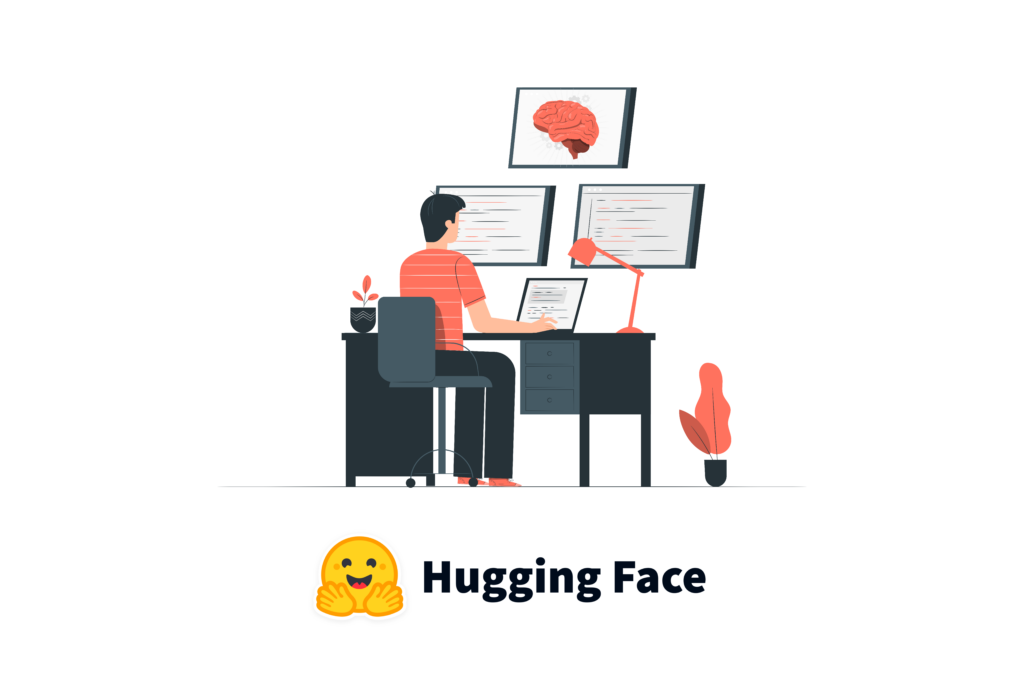





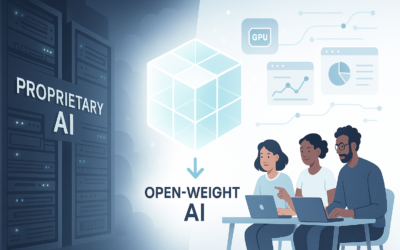
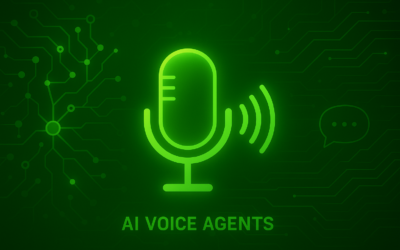


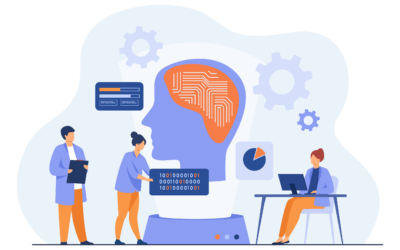
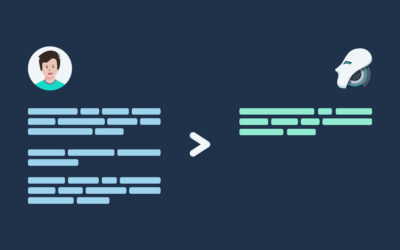
I’m curious to know how Hugging Face’s open source AI models can be used in conjunction with LLM leaderboards to identify top-performing models for real-world applications?
Great job on shedding light on the power of open source AI models! Utilizing platforms like Hugging Face is a game-changer for developers, allowing us to leverage each other’s work and collaborate on projects. Kudos to Krasamo for promoting tech-agnostic AI solutions!